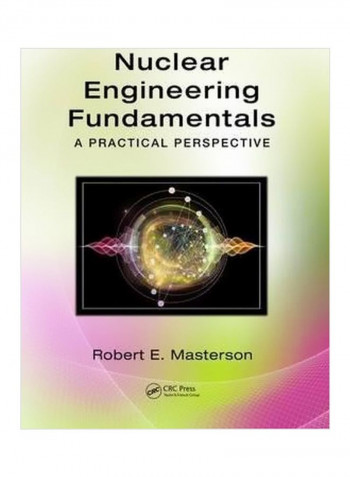Nuclear Engineering Fundamentals : A Practical Perspective Hardcover English by Robert E. Masterson - 12 May 2017
Recommend
Sort by
Rating
Date
Specifications
Author 1
Robert E. Masterson
Book Description
NUCLEAR ENGINEERING FUNDAMENTALS is the most modern, up-to-date, and reader friendly nuclear engineering textbook on the market today. It provides a thoroughly modern alternative to classical nuclear engineering textbooks that have not been updated over the last 20 years. Printed in full color, it conveys a sense of awe and wonder to anyone interested in the field of nuclear energy. It discusses nuclear reactor design, nuclear fuel cycles, reactor thermal-hydraulics, reactor operation, reactor safety, radiation detection and protection, and the interaction of radiation with matter. It presents an in-depth introduction to the science of nuclear power, nuclear energy production, the nuclear chain reaction, nuclear cross sections, radioactivity, and radiation transport. All major types of reactors are introduced and discussed, and the role of internet tools in their analysis and design is explored. Reactor safety and reactor containment systems are explored as well. To convey the evolution of nuclear science and engineering, historical figures and their contributions to evolution of the nuclear power industry are explored. Numerous examples are provided throughout the text, and are brought to life through life-like portraits, photographs, and colorful illustrations. The text follows a well-structured pedagogical approach, and provides a wide range of student learning features not available in other textbooks including useful equations, numerous worked examples, and lists of key web resources. As a bonus, a complete Solutions Manual and .PDF slides of all figures are available to qualified instructors who adopt the text. More than any other fundamentals book in a generation, it is student-friendly, and truly impressive in its design and its scope. It can be used for a one semester, a two semester, or a three semester course in the fundamentals of nuclear power. It can also serve as a great reference book for practicing nuclear scientists and engineers. To date, it has achieved the highest overall satisfaction of any mainstream nuclear engineering textbook available on the market today.
ISBN-10
1482221497
Language
English
Publisher
Apple Academic Press Inc.
Publication Date
12 May 2017
Number of Pages
961
About the Author
Dr. Robert E. Masterson holds an M.S. and a PhD (ScD) in nuclear science and engineering from the Massachusetts Institute of Technology and a B.S. in physics from the University of Notre Dame. The author has published extensively in the Transactions of the ANS (the American Nuclear Society) and has been a member of the society for many years. Dr. Masterson has also served over the years as Affiliate Professor of nuclear science and engineering at the Virginia Polytechnic Institute and has an extensive background in the fields of reactor safety, reactor design and analysis, reactor thermal hydraulics, numerical analysis, reactor physics, reactor dynamics, nuclear medicine, and nuclear particle transport. The author has more than 20 years of experience in the field of nuclear science and engineering and has worked for Westinghouse Nuclear Energy Systems at the Hanford site. He is president of a major technology consulting firm and is also the author of the book "Introduction to Nuclear Reactor Physics", which can also be obtained from CRC Press. In addition to his work in nuclear science and engineering, he has founded and cofounded several companies and has held many noteworthy management, advisory, and strategic positions.
Editorial Review
The author presents a fresh approach to the fundamental science and engineering related to nuclear power generation. Difficult concepts are explained in a simple way that will make it easier for students to grasp. The author has gone to great lengths to make the content interesting and uses numerous graphical illustrations to help explain the theories. The content is comprehensive and covers topics that would generally only be found in a collection of textbooks. - John Robberts, Design Point Consulting Engineers (Pty) Ltd, South Africa "This book covers a lot of the material used in most sophomore and junior year undergraduate nuclear engineering courses. There are a large number of review questions and homework problems at the end of each chapter that will aid the student in learning the material. The chapters tend to stand alone so that the instructor can select the chapters of interest as needed for their course. Hence, one could easily use this same textbook for a three or four semester sequence of undergraduate courses. In addition, it would be the perfect book for an introductory graduate level course for those students who do not have an undergraduate nuclear engineering degree. The textbook is written in an easy to understand manner which also makes it conducive to self-study by nuclear engineers or other persons in industry who are interested in the topic. Moreover, this textbook can serve as a single reference for use in taking the Professional Engineer's Exam in Nuclear Engineering." - Mark Pierson, Virginia Tech, USA



